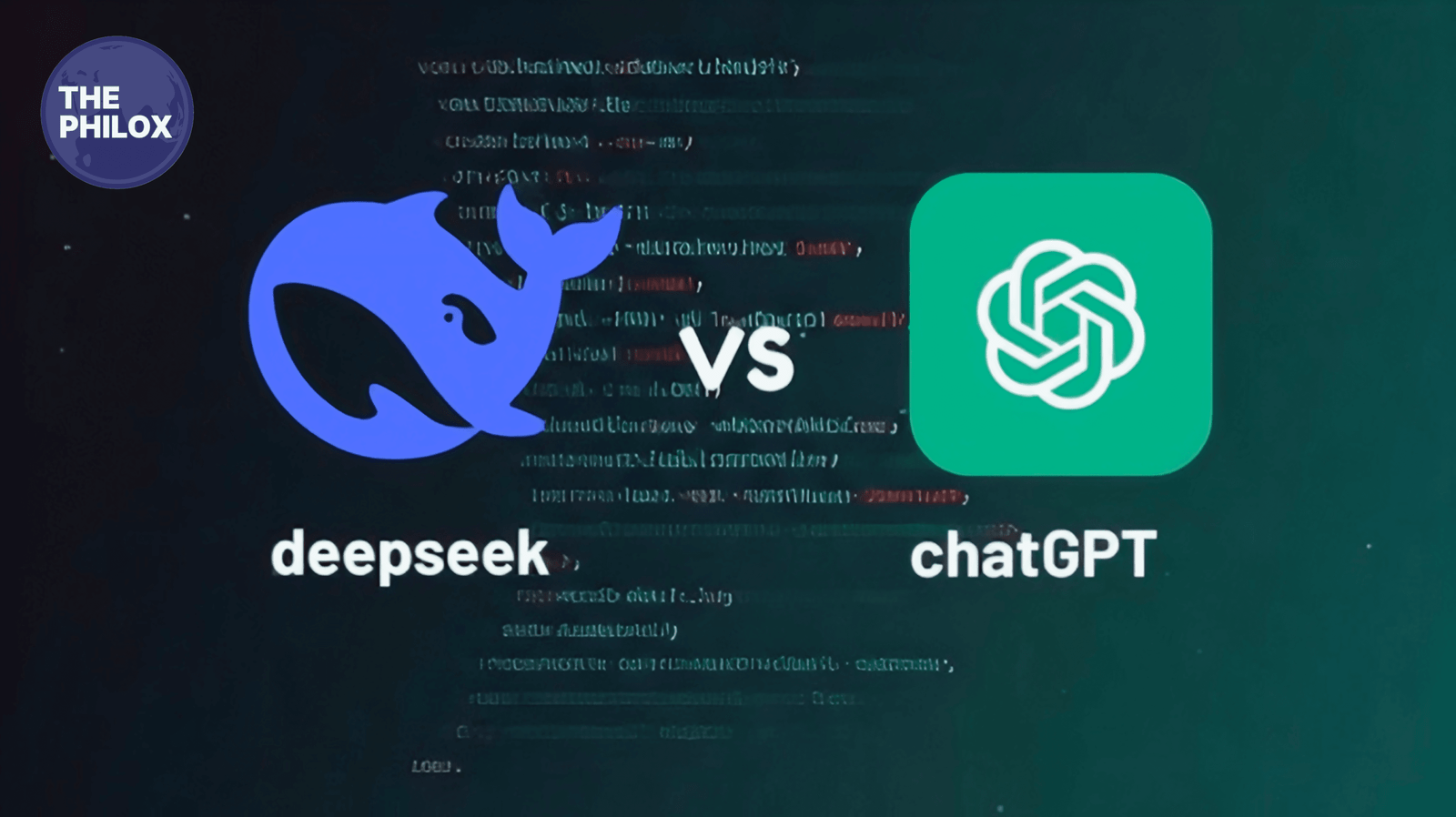Since then, AI-based chatbots have become an indispensable part of digital interaction for users, starting from answering small queries to the drafting of email and even composing code.
Many AI models abound, but few have managed to gain a huge market share for themselves. Interestingly, some of them are OpenAI’s ChatGPT. The developers provide free and paid versions to cater to various needs.
The interesting aspect is that this game is being changed by a new entrant called DeepSeek, which is going with a strong but not-so-costly alternative available for many.
DeepSeek’s meteoric rise compels not just the AI industry to think in terms of accessibility but also challenge the guard that includes OpenAI to rethink their pricing models and competitive strategy.
The article will look deeper into how DeepSeek is making waves in the status quo, what impact does it have on the OpenAI business models, and what the future of AI subscription services might be like.
Since its release, ChatGPT from OpenAI has garnered such accolades regarding its advanced natural language processing capabilities. The chatbot has been improved iteratively since its conception to further strengthen the reasoning and contextual abilities and improve the precision of responses.
OpenAI has introduced the paid version of the app-ChatGPT Plus-for $20 a month, which will ensure that it continues to progress and also supports its infrastructure. Amongst several benefits this paid version offers are: 1. Priority access during peak hours. 2. Faster Response Times – Reduce wait times to get a response.
Early access to the features: The user gets the chance to try a new tool or enhancement before it is produced in the public.
This tiered model was pretty helpful for monetization but brought its differences between the free and paid users along.
With DeepSeek, this creates many of these users questioning whether they should continue paying for ChatGPT Plus when there is such a better alternative and, in this case, an absolutely free one to boot.
DeepSeek: The New AI Disruptor
DeepSeek is a Chinese AI startup founded in 2023. The young company quickly rose to prominence on the grounds that it operates as free and open access.
While most competitors exist behind paywalls or free-to-use limited tier, DeepSeek offers its star model, the DeepSeek-R1, at no cost.
This strategic play has allowed DeepSeek to add more users at a pace that has really become very popular.
The DeepSeek application has surged to the top of the Apple App Store both in the U.S. and the U.K. This is, therefore an indication of how consumer preference trends have shifted.
What Does Set DeepSeek Apart?
Several factors have been attributed to the success of DeepSeek. These include:
1. Open-Source Model: DeepSeek is an open-source model. Its developers are free to use, modify, and improve on the technology.
2. Cheap API Pricing: Developers and businesses can include DeepSeek’s AI in their applications at a fraction of the cost of the OpenAI API services.
3. Performance Competitiveness- Benchmark tests results show DeepSeek-R1 at least as good, and sometimes even better, than recent releases from OpenAI at mathematics, coding, or logical reasoning tasks.
DeepSeek and its impact on AI Accessibility and Pricing
One of the most game-changing aspects of DeepSeek is its affordable API pricing. In the AI industry, API access plays a crucial role in enabling developers to build AI-powered applications, and cost is a significant factor for businesses.
To put things into perspective, here’s a pricing comparison:
| Model | Cost per Million Input Tokens | Cost per Million Output Tokens |
|---|---|---|
| DeepSeek-R1 | $0.55 | $2.19 |
| OpenAI’s GPT-4-turbo (o1 model) | $15.00 | $60.00 |
This stark contrast in pricing has forced many businesses to reconsider their reliance on OpenAI’s API, as DeepSeek offers a cost-effective alternative without sacrificing performance.
For individual users, the appeal of a free AI model with capabilities comparable to ChatGPT Plus has led to a decline in paid subscriptions.
This trend could significantly impact OpenAI’s revenue model, which heavily relies on subscription fees to fund AI development and infrastructure.
Performance Comparison: DeepSeek vs. ChatGPT
DeepSeek-R1 has amazed users and researchers alike with tough tasks, including these:
1. Math Problem-Solving – Outperforms other models in logic-based and numerical computations.
2. Coding and Programming – Provides accurate code snippets and helps debug.
3. Natural Language Understanding – Produces human-like answers that are coherent and contextual yet accurate.
Some benchmark tests even suggest that DeepSeek-R1 outperforms certain versions of ChatGPT in technical fields, making it an attractive option for developers, students, and professionals.
However, OpenAI’s models still excel in areas like creativity, nuanced writing, and contextual depth, making them preferable for content creation and general-purpose conversations.
How OpenAI Might Respond to DeepSeek’s Challenge
With DeepSeek attracting a large user base, OpenAI faces a critical decision:
1. Lower Price for API and ChatGPT Plus – This would make OpenAI lower the price, and therefore, developers would be more willing to sign up and stay with the base.
2. Free Feature Extension – More extensive extension of the free version of ChatGPT would alleviate the DeepSeek issue further.
3. Inventing New Trends – OpenAI introduces groundbreaking functionalities in its AI assistants with the help of a response to competition, and among them are customized GPTs, voice interactions, and multimodal capabilities.
4. Advancement of Model Performance – Higher accuracy and speed combined with higher creativity in performances would make ChatGPT the best AI assistant in the market.
Whatever course OpenAI might pursue, DeepSeek has already been a great disruptor in the AI marketplace that will get the heavyweights to think about their strategies twice.
Ethical and Technological Impact
Free AI models increase accessibility but create some ethical concerns:
1. Misuse of Risks- The poor limitations placed on AI tools enhance the risks of misuse for purposes like spreading false information, fraud, or unethical practices.
2. Server and Infrastructure Costs – Hosting free AI for millions on this planet can cost an arm and a leg, and the only question would be whether DeepSeek will long last.
3. Regulation Concerns – New and tighter rules imposed by government regulations on the application of AI can also impel the working model of the deep seek being followed today which has open access not being granted.
Both DeepSeek and OpenAI hold the responsibilities of responsible AI deployment, where their models spur safety and ethical usage.
Future of AI Subscription Models
DeepSeek has revolutionized the manner of charging and delivering AI services. The future of AI services will be:
1. More Freemium models – Companies will offer quality free AI service and paid versions to upgrade.
2. Low API Cost Competitions: In order to get attention the firm needs to make the AI cheaper to be taken on developers.
3. Wide accessibility of AI tools – with such intense competitions AI will come handy to the student researchers, as well as other weaker groups in the society
Lastly, it is an advantage for a consumer, as these companies are competing so that their AI can become powerful and less expensive with maximum accessibilities.
DeepSeek represents a turning point in the industry, pushing OpenAI to the second position and repositioning the AI access balance.
The free open-source approach and the low-cost pricing for its API have shocked the traditional business model, forcing companies to review their pricing structure.
In fact, if these Open AI and others of their stature take this challenge, the services of AI are going to look much more open, cheaper, and more innovative.
Stay Connected and Share Your Stories
For all those inspired by stories of resilience and ambition, follow us on X/Twitter and on Instagram . For those with untold stories that you would love to share, please send them to contact@thephilox.com




